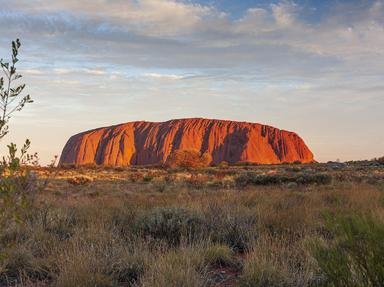Quiz Answer Key and Fun Facts
1. Let us start the ball rolling to see if you know the date on which Australia became an independent nation.
2. Over the years Australia has produced numerous world class athletes. However, who is considered our greatest international sporting achiever, who was knighted and is an icon in a country that thrives on sport?
3. What is Australia's national tree?
4. What icon of Australian production produces over 20 million units per year in sales?
5. How many animals are on the Australian Coat of Arms?
6. Australia has the largest sand island in the world. Can you name this island?
7. What is the Australian National Anthem?
8. Name the Australian national icon that is commonly known by the locals as "The Coathanger".
9. You may have played the game, bingo. However, what is a dingo?
10. Can you name the first Australian-born actor or actress to win an acting Academy Award?
11. What geographical feature is Uluru (Ayers Rock)?
12. Can you name the Australian poet who wrote "Waltzing Matilda"?
13. Besides Australia's unique animals, we also have some deadly ones. From the list below, can you name the deadliest animal that has venom is so toxic it can kill a human in two minutes, and is found in or around our shores?
14. Can you name our most famous outlaw or bushranger of Irish descent in the 1800s?
15. Name the annual event that "Stops the Nation" in November.
16. Based on a blue background, what are the elements of our national flag?
17. The Aboriginal and Torres Strait Islander people have inhabited our land for over 50,000 years. With the advent of European settlers in 1788, when did these Indigenous Australians get the right to vote in government elections?
18. Which one of our cities has the largest public tram system in the world?
19. What is the longest river on the continent?
20. What portion of the total population of the country live near the coast?
Source: Author
zambesi
This quiz was reviewed by FunTrivia editor
agony before going online.
Any errors found in FunTrivia content are routinely corrected through our feedback system.
